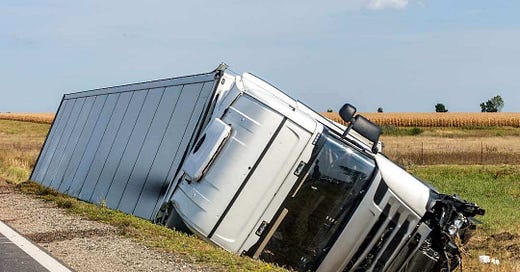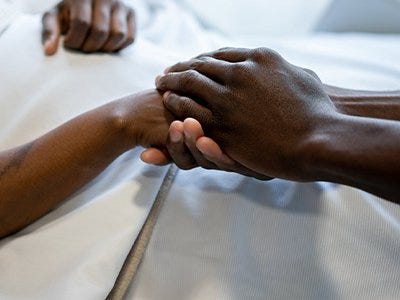“The weekend is when the fun happens” is what a consultant once told me during an A&E shift. If by "“fun” he meant low staffing numbers, a department full of alcoholics and some of the most acutely unwell patients then I guess he was right.
It was around 21:30 and we received a call on the “red phone".” It was a paramedic crew who informed us of a 41-year-old pregnant women who was hit by a truck. The truck had crashed and the patient was found under the toppled over truck. Firefighters and paramedic staff were on the scene and the patient was removed. She had GCS 3 at the time with an airway adjunct in situ.
How far was she? only five minutes away…
My consultant put out a trauma call. A trauma call informs members of the trauma team about the case and involves anaesthetics, general surgery and orthopaedic surgery. As the patient was wheeled in we could all see how bad this was going to be. She was flat - GCS 3 and not really putting much respiratory effort in. She had bruising all over her chest and abdomen. I was pretty worried, especially because we were informed that she was pregnant.
So I performed an A to E assessment. Anaesthetics took the airway and proceeded to intubate her. The SHO took an ABG from the femoral artery and found her pH to be 6.9 with a CO2 of 8.0kPa. That’s a bad gas. Her chest was clear and her abdomen was soft. She was in cardiac arrest and it had been 15 minutes since it started. Her abdomen was distended which I guess is normal in pregnancy. After the full A to E, we had to take action and the womb became the main focus.
I learnt a lot in this case as there are some additional measures we have to take with pregnant women involved in trauma. The first is to tilt the uterus to the left hand side in order to relieve pressure on the inferior vena cava. Lying the patient flat will only reduce venous return at a time when blood flow is vital.
Saving the life of the mother takes paramount importance. I guess this is the ethical lesson that I wanted to get across in this edition. This is easy to articulate in theory but in a live scenario - it’s pretty tough. The entire trauma team looked to the A&E consultant to make a decision. We tried to get a collateral history but there was nothing available. We had no idea how far along this patient was. It was such a high pressured scenario.
The consultant proceeded to perform a peri mortem c-section. This is essentially a c section with the intention of evacuating the foetus (dead or alive). She grabbed the scalpel and proceeded to make an incision, similar to where the c section incision would be made. It was messy - I applied gauze to where she sliced and the general surgery and orthopaedic consultants and registrars watched on. We found a foetus that was unfortunately too small to be viable and we proceeded to remove it.
It was a sad scene. I felt and still feel heavy hearted as I look to my seven month old son whilst typing this newsletter. We waited for a short while and the patient regained return of spontaneous circulation (ROSC) and was eventually transferred for a CT scan to look for any other injuries.
She was found to have multiple rib fractures, bilateral pneumothorax, a left scapula fracture and some intra abdominal free fluid (secondary to the C section). The general surgeons placed two trauma chest drains into the patient and rapid transfer to the nearest major trauma centre was arranged.
This was the first time I was involved in a case like this. I mean, I had learnt about trauma in pregnancy during my advanced life support (ALS) course but I never thought I’d see it. From what I was told, the patient is much better and is off intubation. Whilst the loss of life is always hard to take, it is good to see that the mother is well.
Oh and finally..working on a weekend is certainly not “fun”
Please like & share
Check us out on our various pages
Website: www.paretoeducation.co.uk
Instagram: www.instagram.com/pareto_ed
Twitter: www.twitter.com/pareto_ed
Youtube: https://bit.ly/3DPm23c
Email: paretopaeducation@gmail.com






